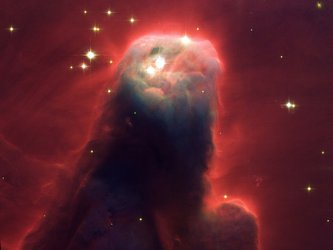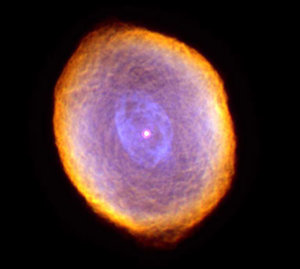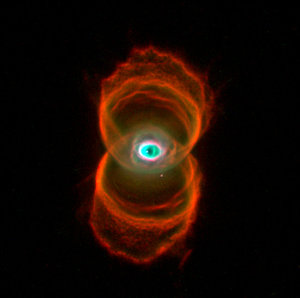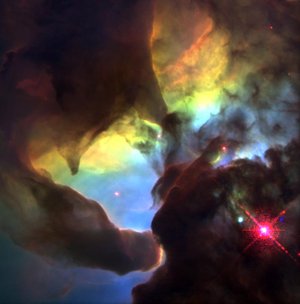Cat's Eye Nebula (NGC 6543)
The Cat's Eye Nebula (NGC 6543), seen in detail by the NASA/ESA Hubble Space Telescope, is one of the most complex planetary nebulae ever seen in space.
Although the rings may be the key to explaining the final ‘gasp’ of the dying central star, the mystery behind the Cat’s Eye Nebula’s nested ‘Russian doll’ structure remains largely unsolved.
A planetary nebula forms when Sun-like stars gently eject their outer gaseous layers to form bright nebulae with amazing twisted shapes. Until recently, it was thought that shells around planetary nebulae were a rare phenomenon. However, astronomers have instead shown that these rings are likely to be the rule rather than the exception.
Hubble first revealed NGC 6543's intricate structures including concentric gas shells and unusual shock-induced knots of gas in 1994. This image, taken with Hubble's Advanced Camera for Surveys (ACS), reveals the full pattern of eleven or more concentric rings, or shells, around the Cat’s Eye. Each ‘ring’ is actually the edge of a spherical bubble seen projected onto the sky - which is why it appears bright along its outer edge.
Observations suggest that the star ejected its mass in a series of pulses at 1500-year intervals. These convulsions created dust shells that each contains as much mass as all of the planets in our Solar System combined.
Several explanations have been proposed, including cycles of magnetic activity somewhat similar to our own Sun's sunspot cycle, the action of companion stars orbiting around the dying star, and stellar pulsations. Another school of thought is that the material is ejected smoothly from the star, and the rings are created later on due to formation of waves in the outflowing material.










